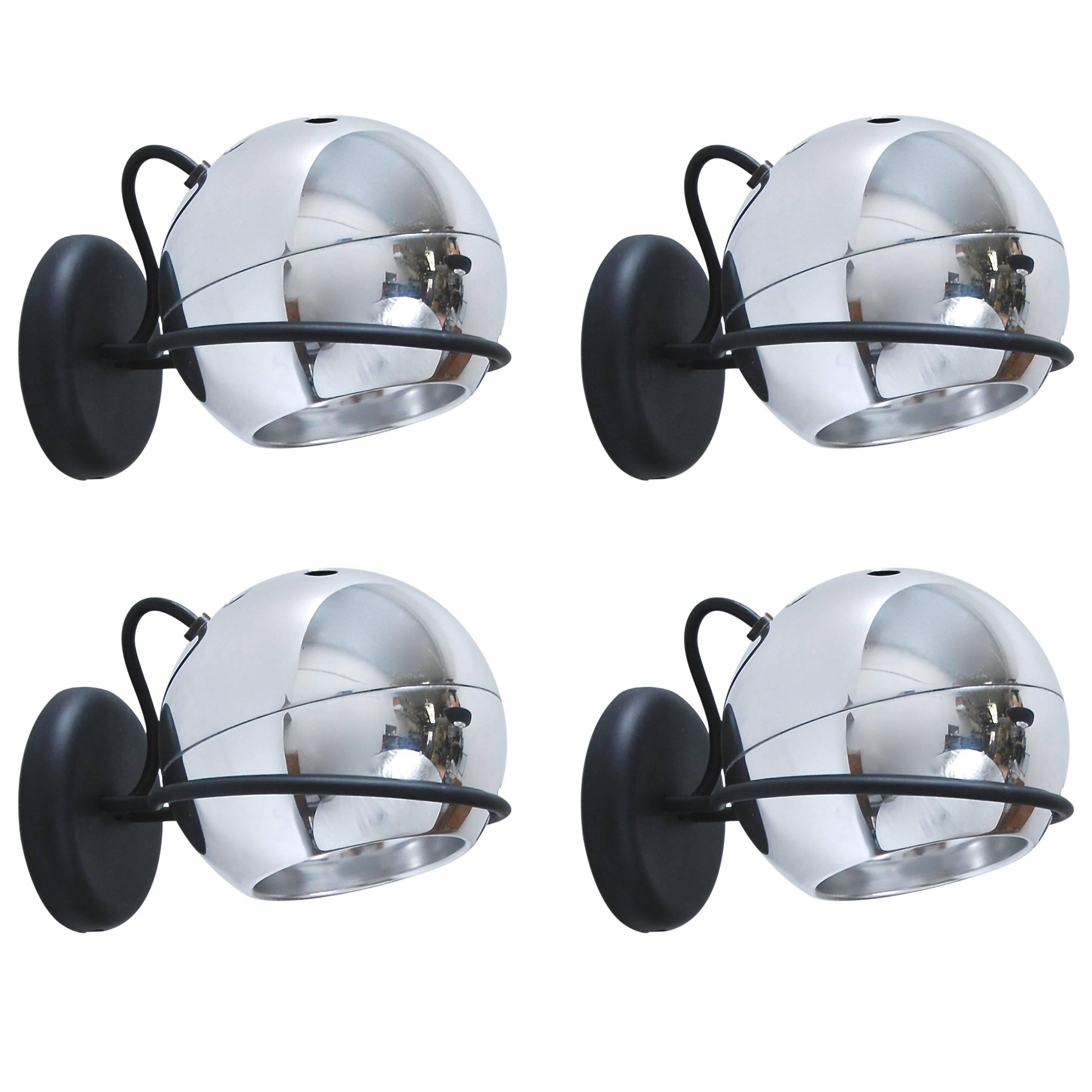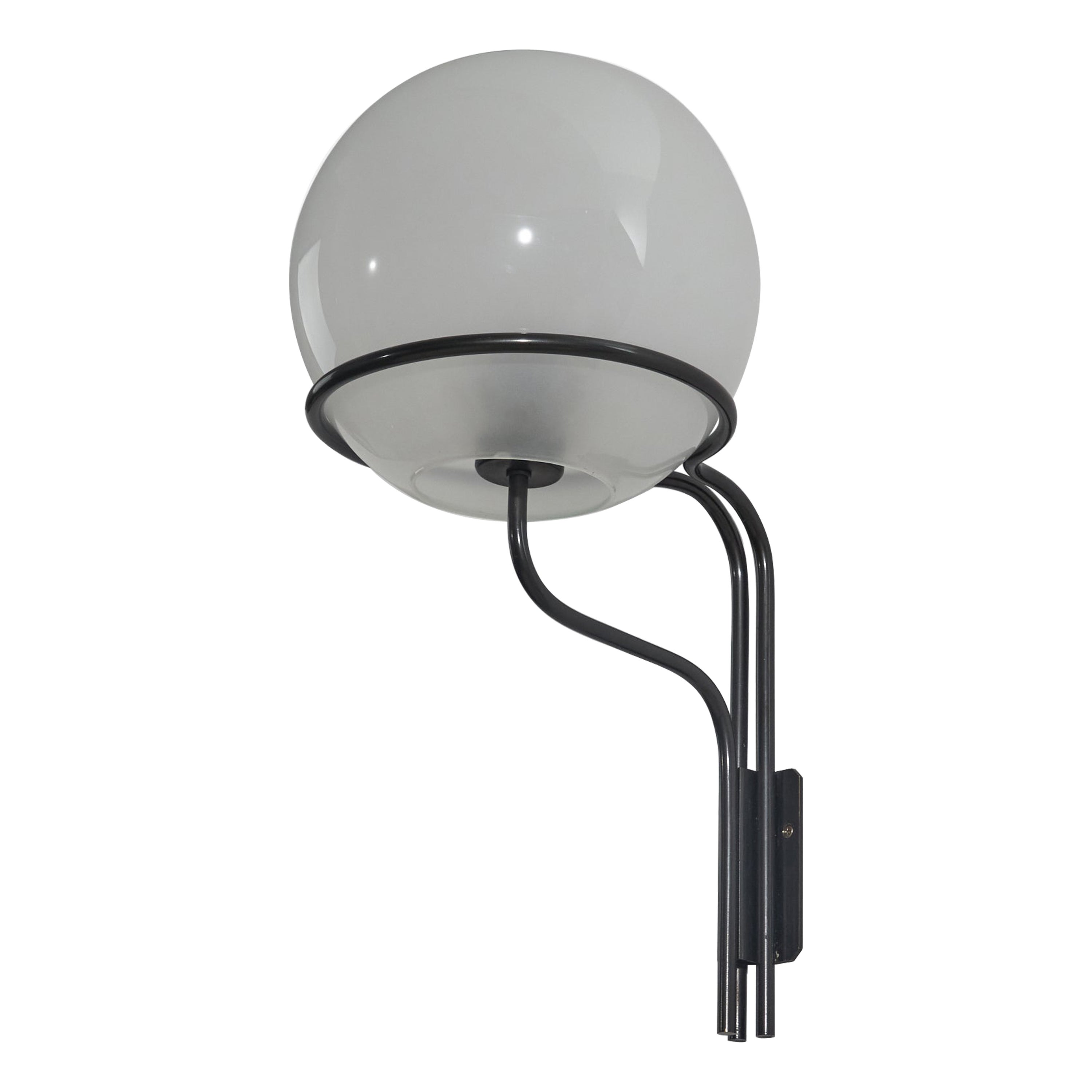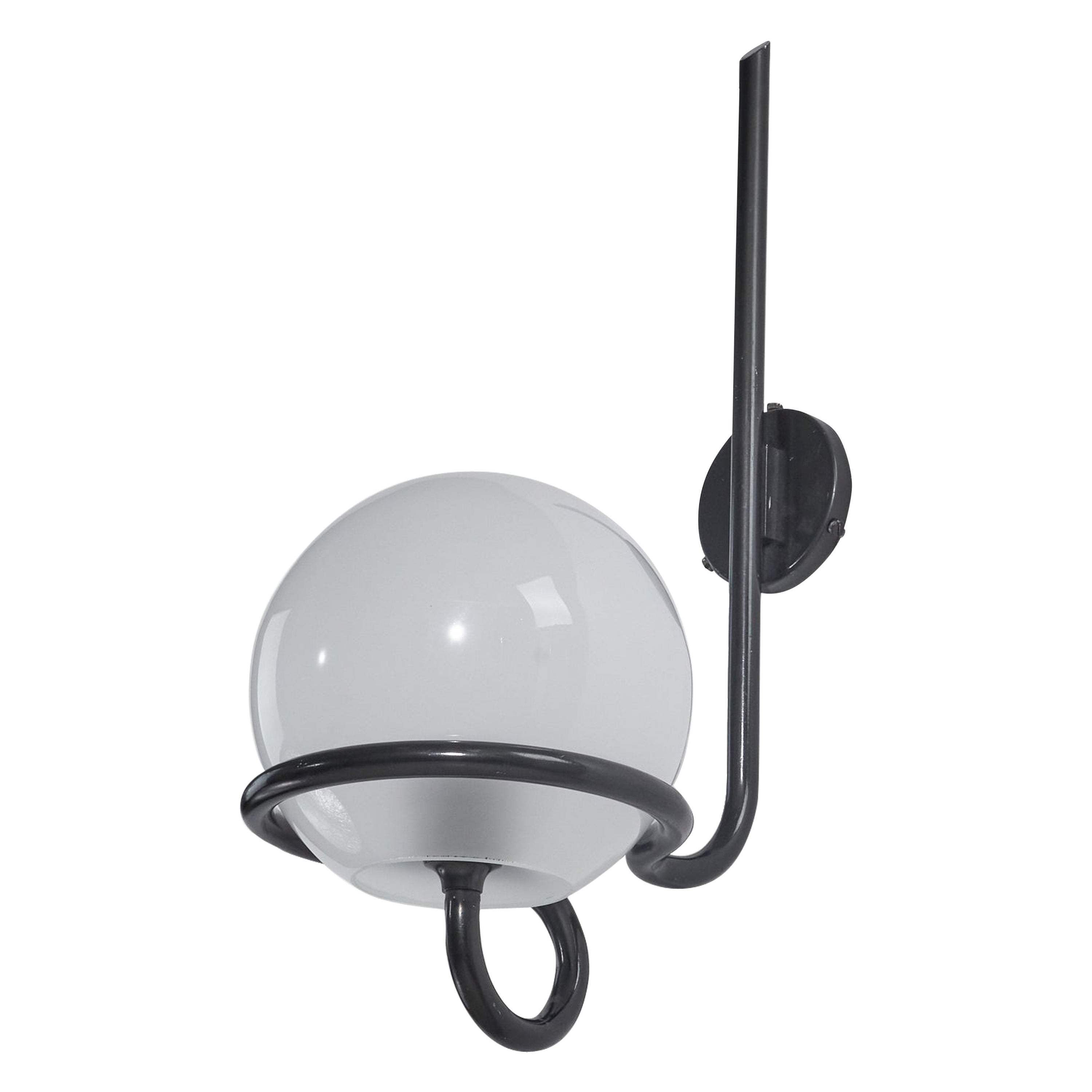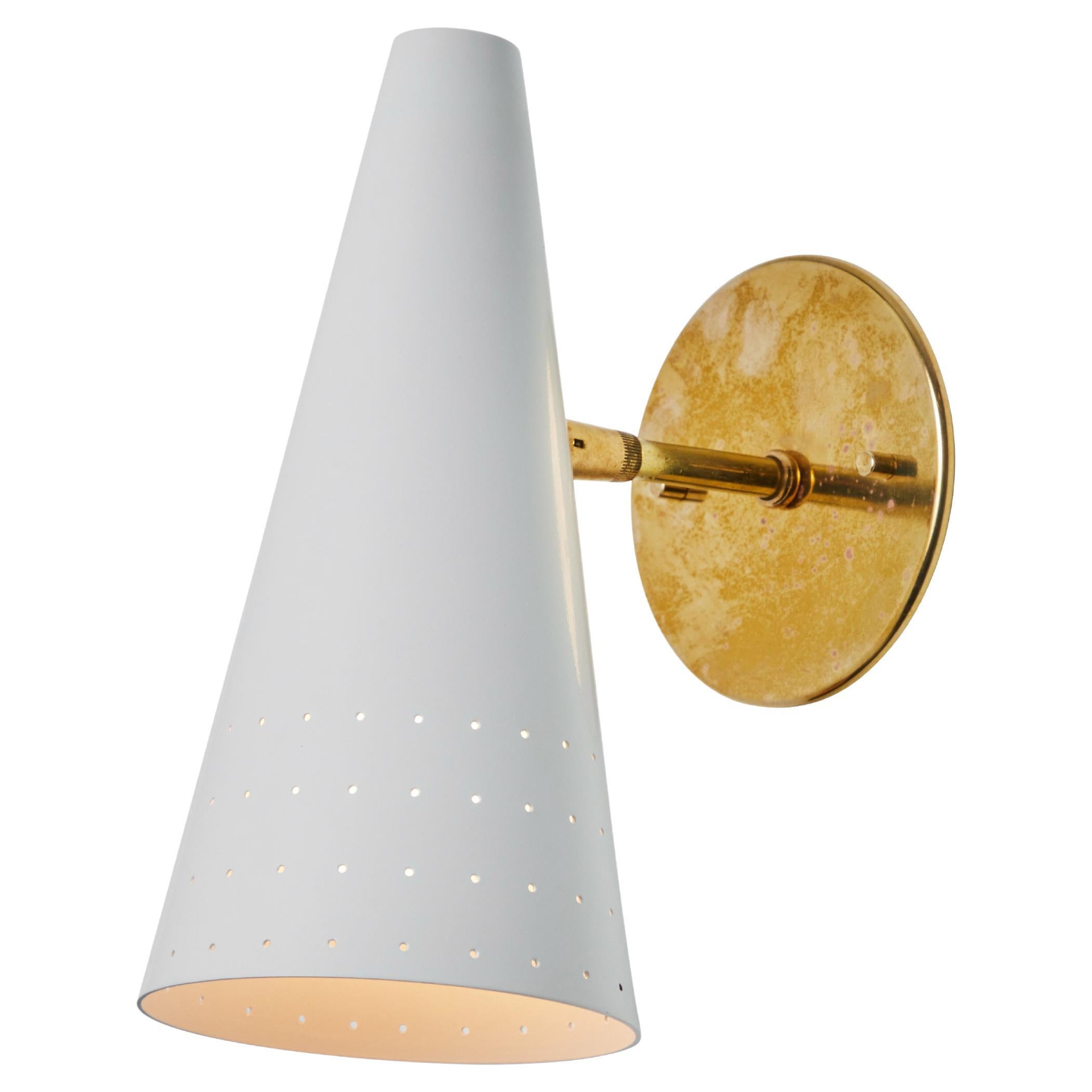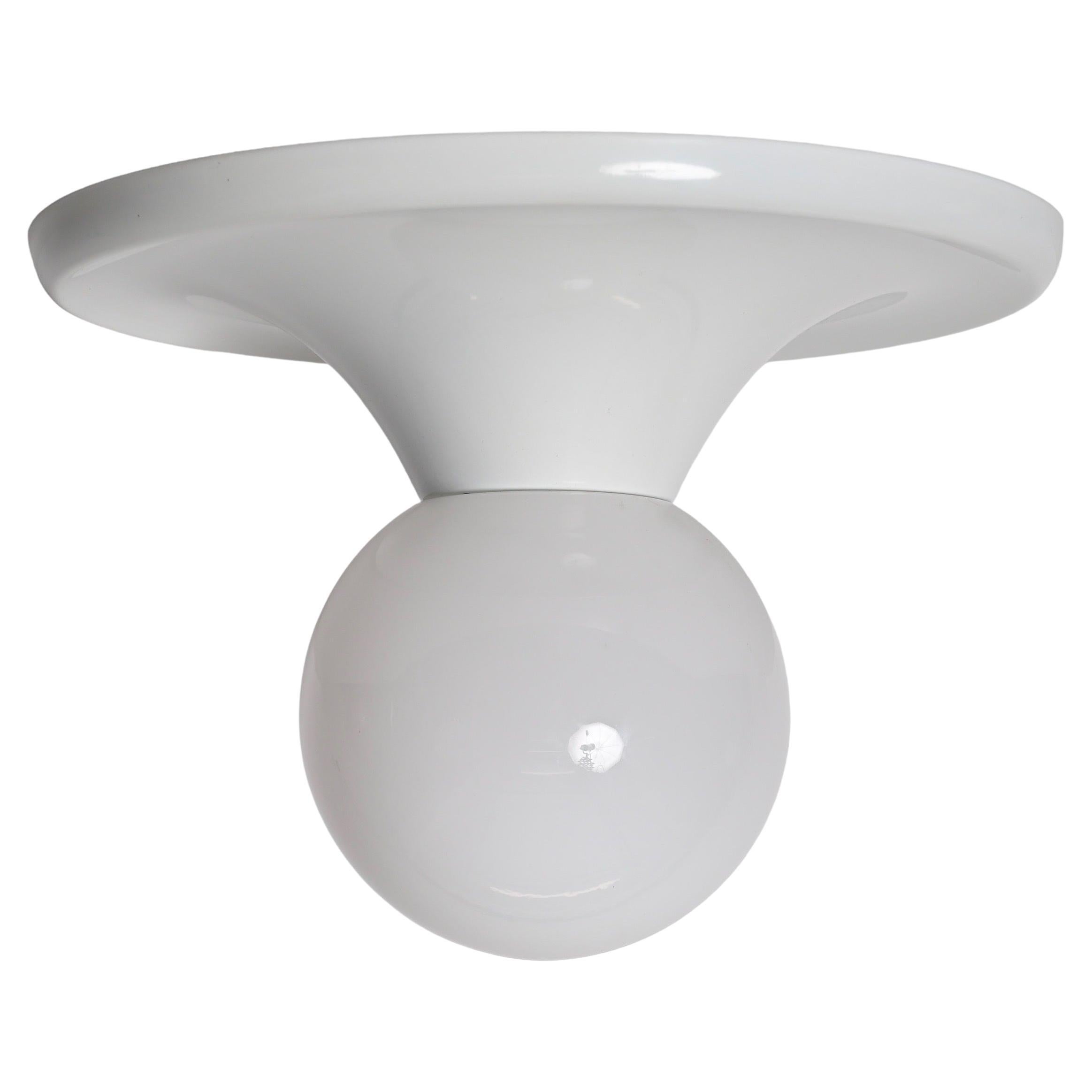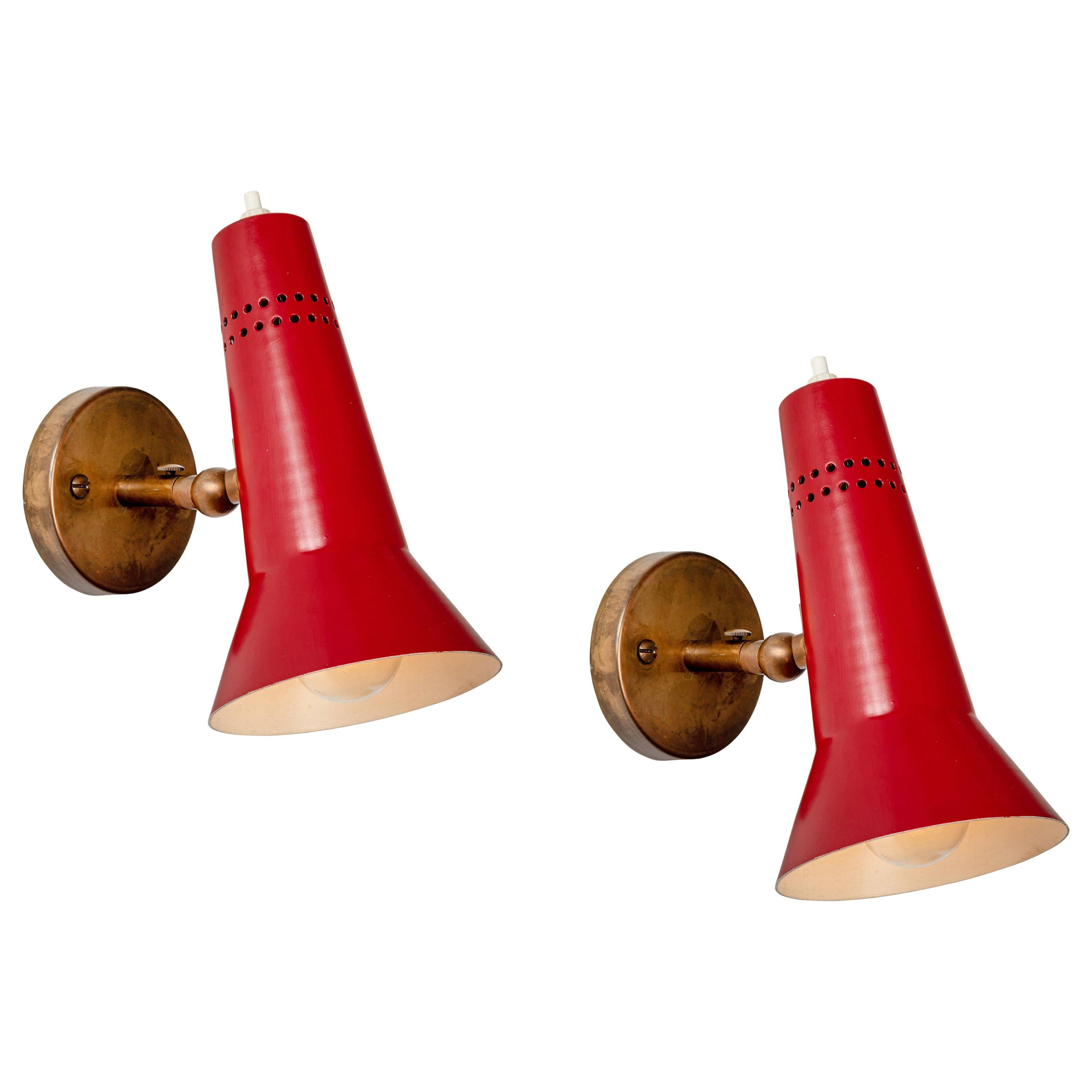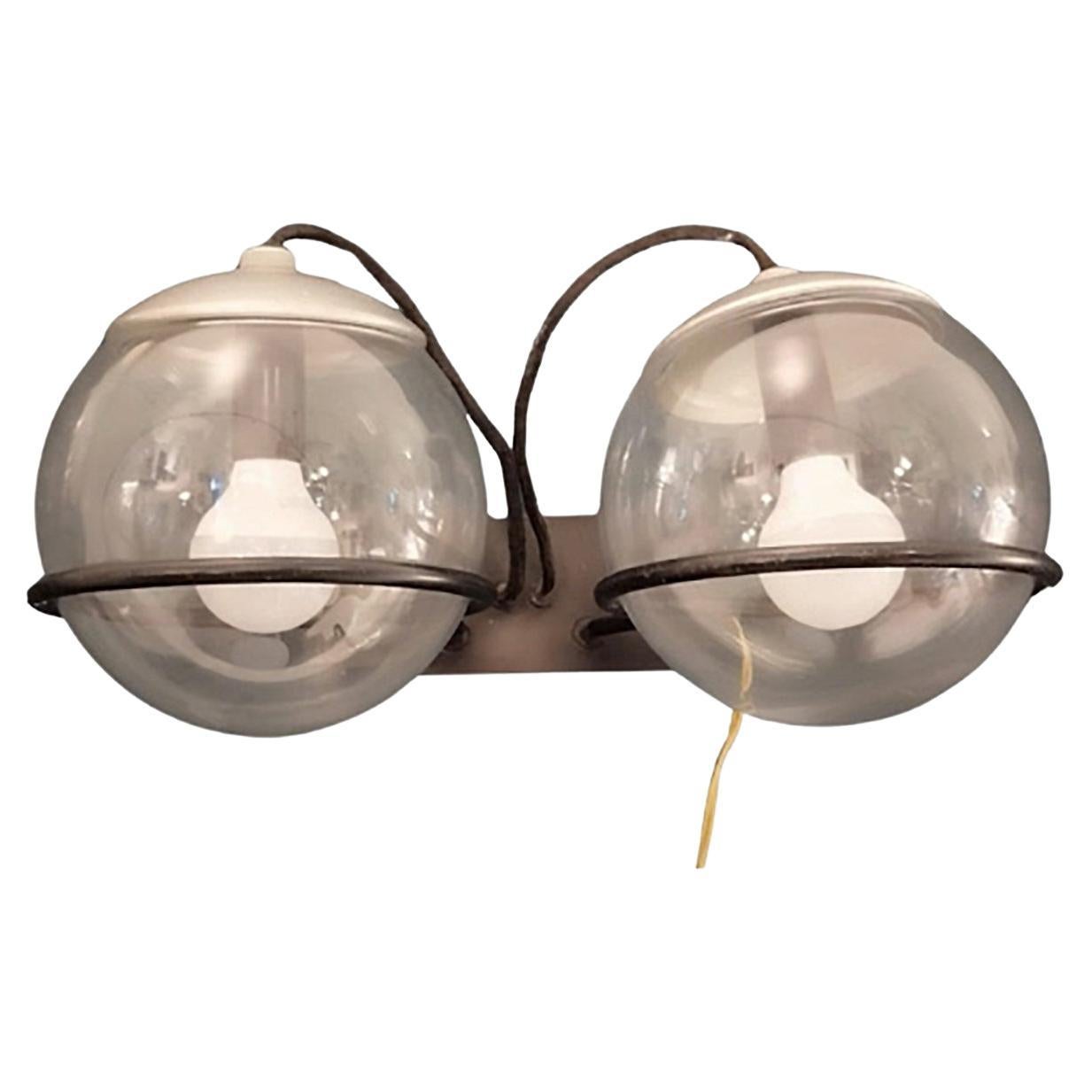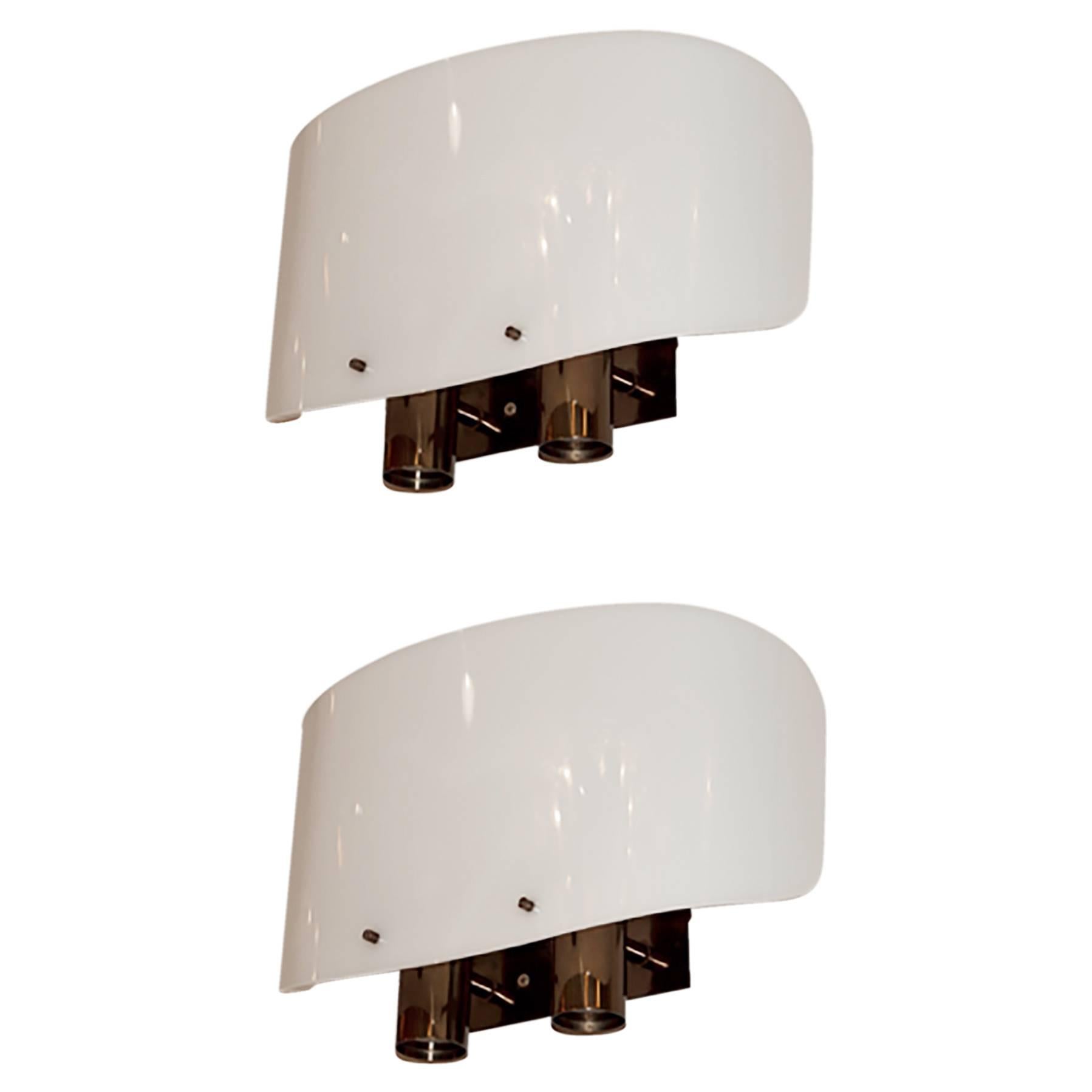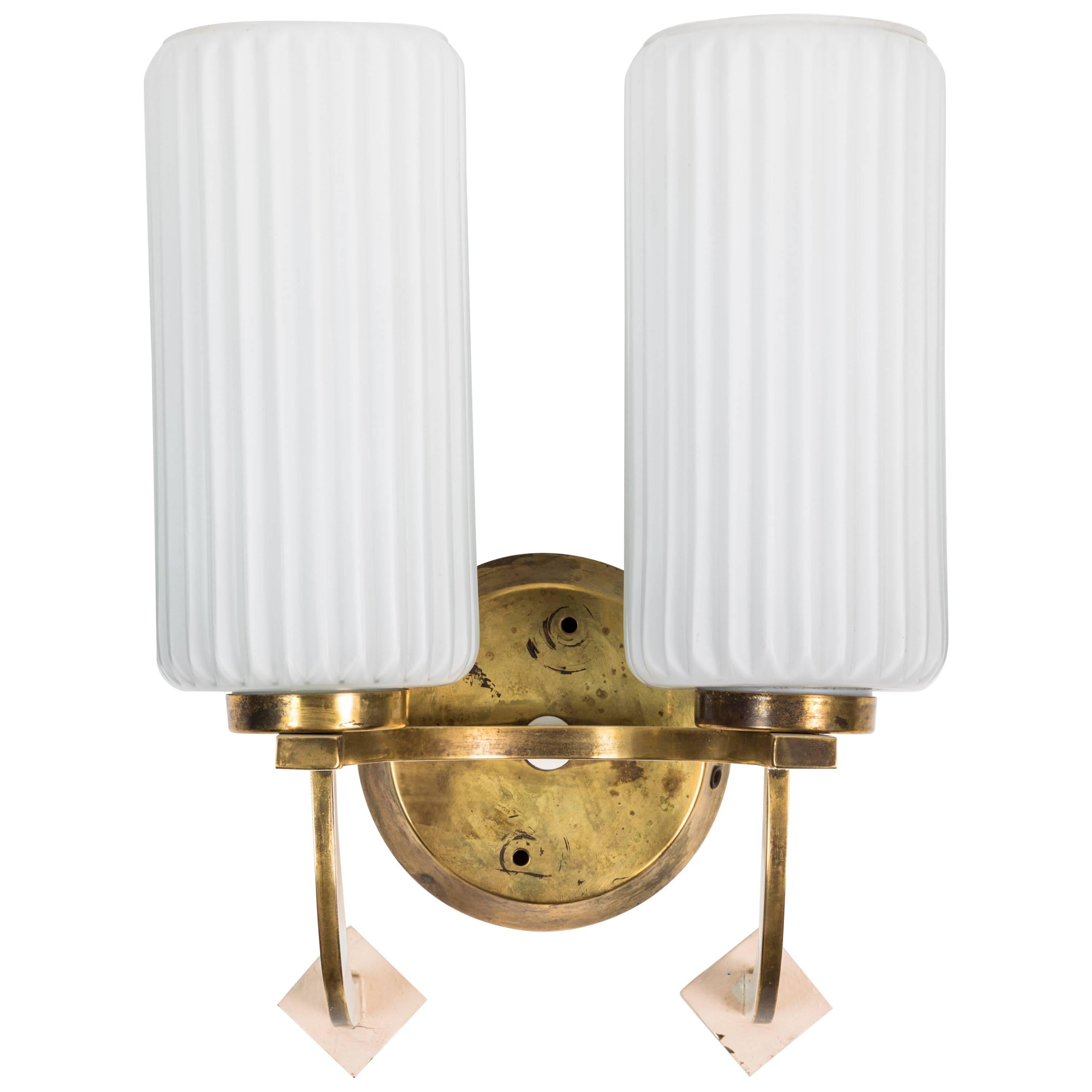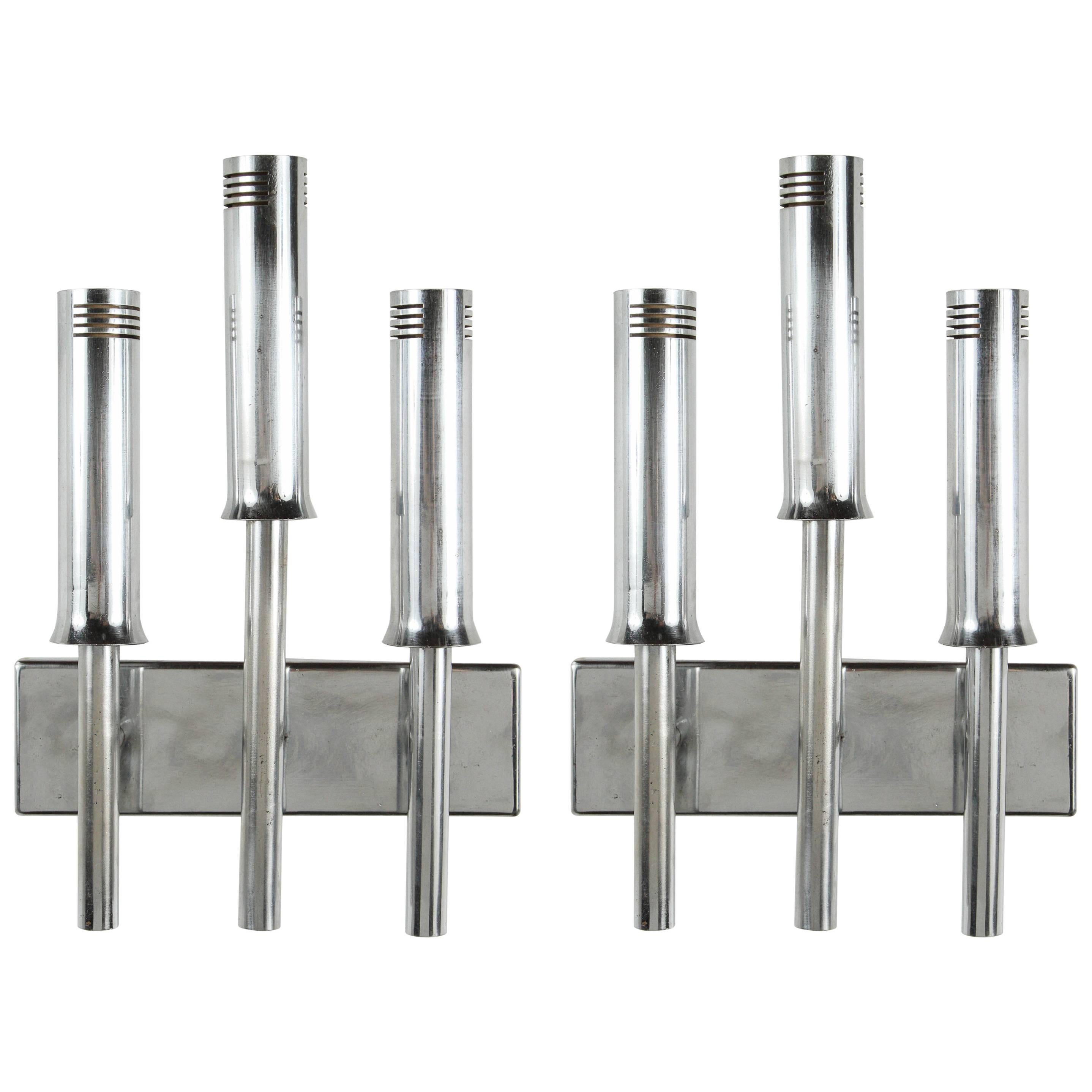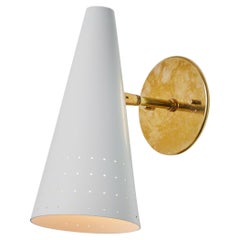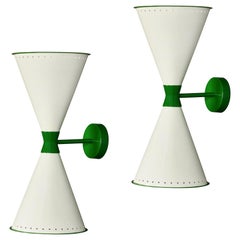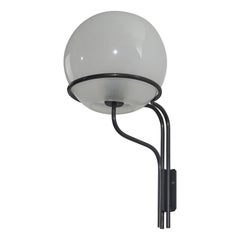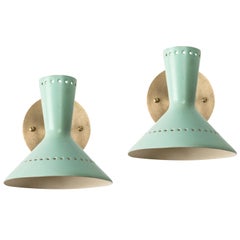
Pair of 1960s Italian Perforated Double-Cone Sconces in the Manner of Arteluce
View Similar Items
Want more images or videos?
Request additional images or videos from the seller
1 of 11
Pair of 1960s Italian Perforated Double-Cone Sconces in the Manner of Arteluce
About the Item
- Similar to:Arteluce (Designer)
- Dimensions:Height: 5.5 in (13.97 cm)Width: 5.5 in (13.97 cm)Depth: 5.5 in (13.97 cm)
- Sold As:Set of 2
- Style:Mid-Century Modern (Of the Period)
- Materials and Techniques:
- Place of Origin:
- Period:
- Date of Manufacture:1950s
- Condition:Wear consistent with age and use. Minor losses. Minor structural damages. Professionally rewired for US electrical with custom thick brass back plates for mounting over standard American juncture box. Minor bends, dents, scuffs and patination as seen in the photos and noted only for accuracy.
- Seller Location:Glendale, CA
- Reference Number:1stDibs: LU1447211158181
About the Seller
5.0
Platinum Seller
These expertly vetted sellers are 1stDibs' most experienced sellers and are rated highest by our customers.
Established in 2012
1stDibs seller since 2015
2,623 sales on 1stDibs
Typical response time: 1 hour
More From This SellerView All
- 1950s Italian White Perforated Cone Sconce Attributed to Gino SarfattiBy Jacques Biny, Arteluce, Gino SarfattiLocated in Glendale, CA1950s Italian white perforated cone sconce attributed to Gino Sarfatti. Executed in brass and white painted aluminum. Arteluce was one of the most innovative lighting design comp...Category
Vintage 1950s Italian Mid-Century Modern Wall Lights and Sconces
MaterialsMetal, Brass
- Pair of Gino Sarfatti Model #21 Red Perforated Sconces for Arteluce, circa 1955By Gino Sarfatti, ArteluceLocated in Glendale, CAPair of Gino Sarfatti model #21 red perforated sconces for Arteluce, circa 1955. Executed in red painted perforated aluminum and brass. Adjustab...Category
Vintage 1950s Italian Mid-Century Modern Wall Lights and Sconces
MaterialsBrass, Metal
- Monumental 'Diabolo' Perforated Double-Cone Sconce in White and GreenBy Gino SarfattiLocated in Glendale, CAMonumental 'Diabolo' perforated double-cone sconce in white and green. Handcrafted in Los Angeles with scrupulous attention to detail and materials. Executed in high quality lacquere...Category
21st Century and Contemporary American Modern Wall Lights and Sconces
MaterialsMetal
- 1960s Gino Sarfatti Metal and Seguso Glass Sconce for ArteluceBy Gino Sarfatti, Arteluce, Archimede SegusoLocated in Glendale, CA1960s Gino Sarfatti Metal and Seguso Glass Sconce for Arteluce. Executed in hand blown bubbled Seguso glass and painted metal. The simplicity of Sarfatti's design and the sculptural ...Category
Vintage 1960s Italian Mid-Century Modern Wall Lights and Sconces
MaterialsMetal
- Pair of Gino Sarfatti Model #10 Sconces in Green for ArteluceBy Gino Sarfatti, ArteluceLocated in Glendale, CAPair of Gino Sarfatti Model #10 sconces in green for Arteluce. Executed in original green painted aluminum and custom fabricated period styled brass backplates designed to mount over a standard American j-box for hardwiring. Ball jointed arm allows flexible shade adjustments and multiple configurations. Originally designed between 1937-1941, the simplicity of Sarfatti's iconic Model #10 "detto Calla" or "Lily...Category
Vintage 1950s Italian Mid-Century Modern Wall Lights and Sconces
MaterialsBrass, Aluminum
- Monumental 'Diabolo' Perforated Double-Cone Sconce in White and RedBy Gino SarfattiLocated in Glendale, CAMonumental 'Diabolo' perforated double-cone sconce in white and red. Handcrafted in Los Angeles with scrupulous attention to detail and materials. Executed in high quality lacquered ...Category
21st Century and Contemporary American Modern Wall Lights and Sconces
MaterialsMetal, Gold Leaf
You May Also Like
- White Acrylic Pair of Large Sconces by Arteluce, Italy, 1960sBy ArteluceLocated in Hagenbach, DEWhite Acrylic Pair of "Large" Sconces by Arteluce, Italy, 1960s Lampshades are in very good vintage condition. No crack, no missed piece. This lamp works with E27 light bulb. Max ...Category
Vintage 1960s Italian Mid-Century Modern Wall Lights and Sconces
MaterialsBrass
- Petite Sconces in the Manner of ArteluceLocated in Los Angeles, CARare sconces in the manner of Arteluce. The concept is of polished aluminum ball shaped fixtures centered in a black metal hoop. The ball fixtures can slide to direct light. Rewired ...Category
Mid-20th Century Italian Mid-Century Modern Wall Lights and Sconces
MaterialsSteel, Aluminum
$1,300 / item - Ico Parisi Sconce, Lacquered Metal, Glass, Arteluce, Italy, C. 1960sBy Arteluce, Ico ParisiLocated in High Point, NCA lacquered metal and glass sconce / wall light designed by Ico Parisi and produced by Arteluce, Italy, c. 1960s. Dimensions of back plate (inches) : 4.14 x 2.36 x 0.89 (height x ...Category
Vintage 1960s Italian Mid-Century Modern Wall Lights and Sconces
MaterialsMetal
- Sergio Asti, Sconce, Black-Lacquered Aluminum, Glass, Arteluce, Italy, 1960sBy Arteluce, Sergio AstiLocated in High Point, NCA sizeable black-lacquered aluminum and glass sconce / wall light, model 145, designed by Sergio Asti and produced by Arteluce, Italy, late 1960s. Dimensions of Back Plate (inches...Category
Vintage 1960s Italian Mid-Century Modern Wall Lights and Sconces
MaterialsAluminum
- Castiglioni Metal "Light Ball" Italian Sconce for Arteluce and Flos, 1960sBy Flos, Arteluce, Achille CastiglioniLocated in Roma, ITIncredibly rare first edition of the famous "Light Ball" applique by Castiglioni in white metal and opal glass. This fantastic lamp was designed by Castiglioni for Arteluce and produced in Italy by Flos in the 1960s. This fantastic lamp was designed by Castiglioni for Arteluce and produced in Italy by Flos in the 1960s. This fantastic light is unique because of the materials, made of white enameled metal and opal glass. It can be mounted on the wall or on the ceiling. The wall light has been tested, it uses an E27 light bulb. It is signed on the backplate by both Arteluce and Flos. A fantastic piece that will grace a mid-century living room or bathroom. Measures (cms): diameter - 42 height - 32 Literature: Casa Amica, 27 June 1972, p. 105 Octagon 30 September 1973, p. 149 Sergio Polano, Achille Castiglioni all the works, Electa, Milano, 2001, p. 224 Giuliana Gramigna, repertoire 1950-2000, Allemandi, Torino, 2003, p. 121. The beginnings of Flos (meaning “flower” in Latin) blossomed from a brilliant idea: to create objects, starting with a light bulb, that would change the way of life for both the Italian market and the foreign markets. Dino Gavina and the small Eisenkeil manufacturing facility in Merano, had already been creating furniture alongside design masters such as Achille and Pier Giacomo Castiglioni, Afra and Tobia Scarpa. But by the early 1960s, Gavina became convinced the time had come to create new lamps. Using the same technology – conceived in the USA and tested at Eisenkeil – used for the Cocoon lampthe Castiglioni brothers and the Scarpa duo began creating lamps such as the Taraxacum or the Fantasma, with many other beautiful and surprising lamps to follow. And so, from day one, Flos was already reinventing the idea of artificial lighting. Achille Castiglioni (born February 16, 1918, Milan–died December 2, 2002, Milan) was a prolific furniture, lighting, and product Italian designer renown for his ironic, joyful, creative and functional designs that, at times, intersected with ideas explored by conceptual artists. Achille Castiglioni was born into a family with deep appreciation for the arts, as he was the third son of sculptor and coin engraver Giannino Castiglioni and his wife Livia Bolla. He first studied the classics at the Liceo Classico Giuseppe Parini, but then switched to study art at the Accademia di Belle Arti di Brera in Milan. In 1937, he decided to follow the steps of his two elder brothers, architects Livio and Pier Giacomo Castiglioni, by enrolling in the Faculty of Architecture at the Politecnico di Milano, graduating in 1944–after having to interrupt his studies when he was stationed in Greece and Sicily during World War II. In 1944, immediately after graduating, Achille Castiglioni joined his brothers Livio and Pier Giacomo in the design studio that they had founded with Livio’s classmate Luigi Caccia Dominioni in 1937 in Milan. Fortunately for Achille, from the very beginning Livio and Pier Giacomo decided to focus almost entirely on designing exhibitions, furniture, housewares, and appliances since architectural commissions were difficult to come by during the war. This product-design focus, and the deep fraternal bound among the three brothers, would later allow the young Achille to experiment early in his career with emerging techniques and new materials that could communicate a fresh aesthetic sensibility suited for the positive outlook of the post-war European market. The Castiglioni brothers’ important collaboration with Phonola and Brionvega In 1940, Pier Giacomo Castiglioni, Livio Castiglioni, and Luigi Caccia Dominioni, in collaboration withe the Phonola company, presented in the VII Triennale di Milano (Milan Triennial), titled Exhibition of the Radio, a research study of radio devices that included the Fimi Phonola 547 radio, the first radio encased in Bakelite instead of wood. Shortly after the exhibition, Luigi Caccia Dominioni suspended his professional activity to serve in the military during World War II and left the studio. The development of the FImi Phonola 547 radio would prove fruitful for the three brothers, as it allowed Livio Castiglioni to cement his role as the leading design consultant for Phonola from 1940 until 1960, and for Brionvega, from 1960 until 1964. These relationships brought in further collaboration among the three brothers, and would eventually result in several designs for radio and sound appliances with innovative materials and shapes for which Achille Castiglioni played a key role, such as the RR 226 stereo system for Brinovega (1965), the radio phonograph RR 126 for Brinovega (1965), and the radio and record player RR 128 for Brionvega (1966) In 1952, Livio decided to build his own practice, independent from Achille and Pier Giacomo, to pursue a deeper exploration of radio waves, music, and technology. But the three brothers would continued to collaborate closely in several projects, and the partnership between Achille and Pier Giacomo became so tight that from 1952 until 1968, when Pier Giacomo died, they co-authored most of their designs. Achille Castiglioni Long Career as Light Designer During this period, the Castiglioni brothers participated in the Italian Exhibition of Furniture (RIMA), where they successfully introduced a series of curved-plywood furniture, and presented important designs, such as the Tubino lamp (1949), originally produced by Italian light maker Arteluce from 1949 until 1974, and reintroduced by FLOS since the late 1970s; and the Luminator lamp (1955), originally produced by Gilardi & Barzaghi, but reintroduced by FLOS in the late 1960s. A new, successful, and long-lasting collaboration developed in 1960, when Pier Giacomo and Achille Castiglioni were reached by entrepreneurial Italian designer Dino Gavina and business man Arturo Eisenkeil with the idea to create a completely new kind of lighting fixtures utilizing a polyamide. The material, which they called “cocoon,” in the hands of the Castiglioni brothers would become a popular and iconic innovation in the 1960s and serve as the successful foundation of Italian lighting company FLOS–founded by Gavina and Eisenkeil in 1962. Pier Giacomo and Achille Castiglioni designed a series of “cocoon” lights utilizing the spray-on polyamide plastic as a coating layer onto a metal frame. Among the most popular Castiglioni “cocoon” lights are: the Taraxacum and the Viscontea ceiling lamps (1960), and the Gatto table lamp (1961). Other of the important lamp designs by Pier Giacomo and Achille Castiglioni for FLOS are the Beehive -or Splügen Braü lamp (1961), Toio –or Toy lamp...Category
Vintage 1960s Italian Mid-Century Modern Flush Mount
MaterialsMetal
- Gino Sarfatti for Arteluce Pair of Model 238/2 Wall Lamp, Italy 1960sBy Arteluce, Gino SarfattiLocated in Naples, ITRare and Original two pair of vintage wall sconces, model 238/2 by Gino Sarfatti for Arteluce, Milan. Italy, 1960 Two spherical diffusers with clear glass, resting on black lacquered...Category
Vintage 1960s Italian Mid-Century Modern Wall Lights and Sconces
MaterialsMetal
Recently Viewed
View AllMore Ways To Browse
Long Modern Wall Sconce
Designer Silverware
George Sconce
Tall Glass Sconce
Alabaster Wall Lights With Bronze
Ceramic Sconce Set
Half Cylinder Sconce
Unwired Sconces
Glass For Petrol Lamp
Jean De Merry Sconce
Mid Century Swedish Wall Sconces
Modern Sconce Set Of 4
Pair Sconces Danish Globe
My A Sconce
Six Italian Wall Lights
Six French Sconces
Fine Art Lamps Wall Sconces
Orrefors Half

